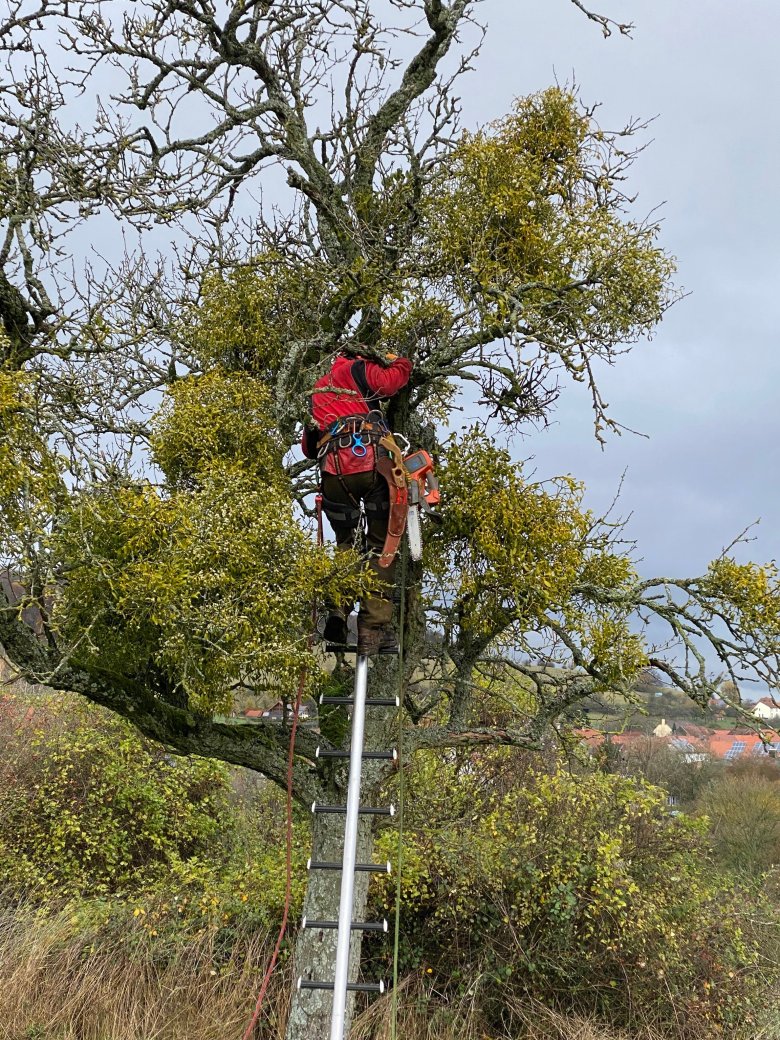LEADER project: Protection of orchards through targeted reduction of mistletoe infestation pressure in Bliesgau

Many people are convinced that mistletoe is a protected species and should not be removed, which has far-reaching consequences for our local orchards. The opposite is the case: mistletoe is a parasite that spreads in orchards, especially on apple trees, the main tree in local orchards. Mistletoe draws water and minerals from the infested trees.
Orchard meadows used to be an integral part of the population's self-sufficiency. They were usually located on the outskirts of villages and were tended by the residents within their community. These maintenance measures created habitats for more than 5000 different species. The landscape is also strongly characterised by the orchards. In recent years and decades, our lifestyle and the procurement of food has changed considerably. As a result, many orchards and their importance have been forgotten and have become overgrown. Due to the lack of care, mistletoe(Viscum album) can now spread unhindered.
At the suggestion of the local fruit and horticultural associations, the Saarpfalz district, in co-operation with the Saarland-Rhineland-Palatinate Association of Horticultural Associations and the local associations, is taking over the sponsorship of a LEADER project to reduce the acute infestation pressure of mistletoe.
The initial plan is to remove around 600 trees. Due to its central location and importance, the area around the Kalbenberg with the villages of Erfweiler-Ehlingen, Ballweiler and Wolfersheim is the focus of the measures. The relevant work will be carried out by a specialised company.
From October, the district administration of the Saarpfalz district and the association of horticultural societies, together with many stakeholders in the region, are organising a measure to preserve the orchard meadows, supported by LEADER funds from the EU and the state.
This project is funded by the Saarland Rural Development Plan 2014-2022 as part of the LEADER strategy of the Blliesgau Biosphere Reserve region with a maximum of €82,083.23 from European Union funds (85% of the funding) and the Saarland.
Further information at www.eler.saarland.de
